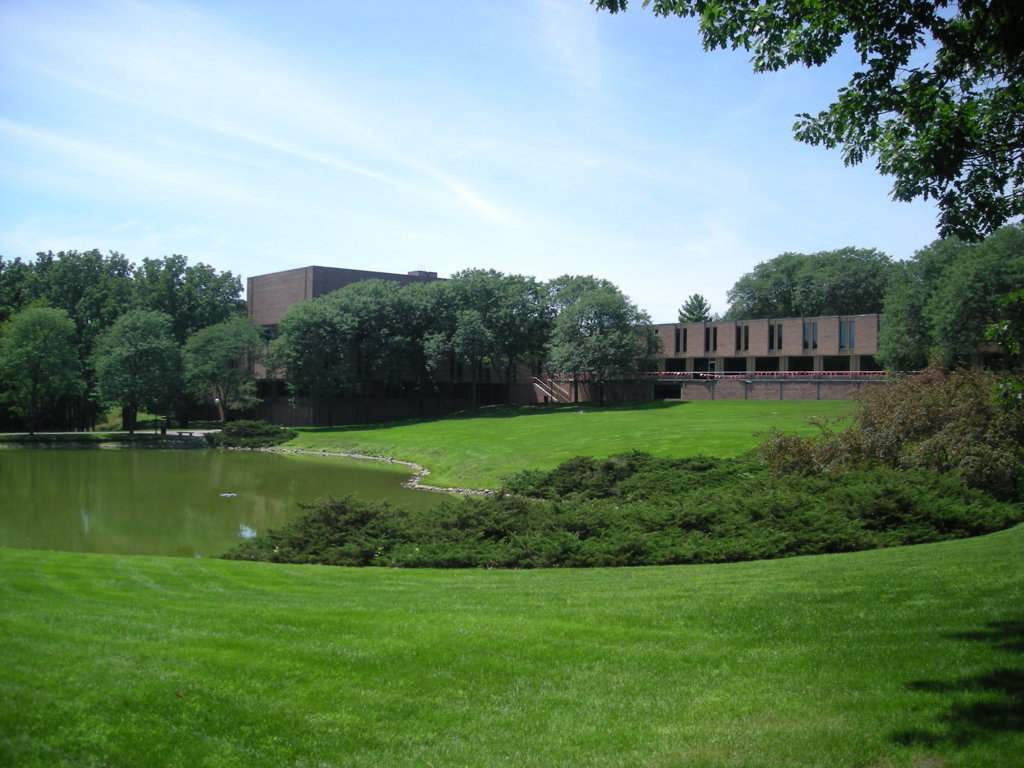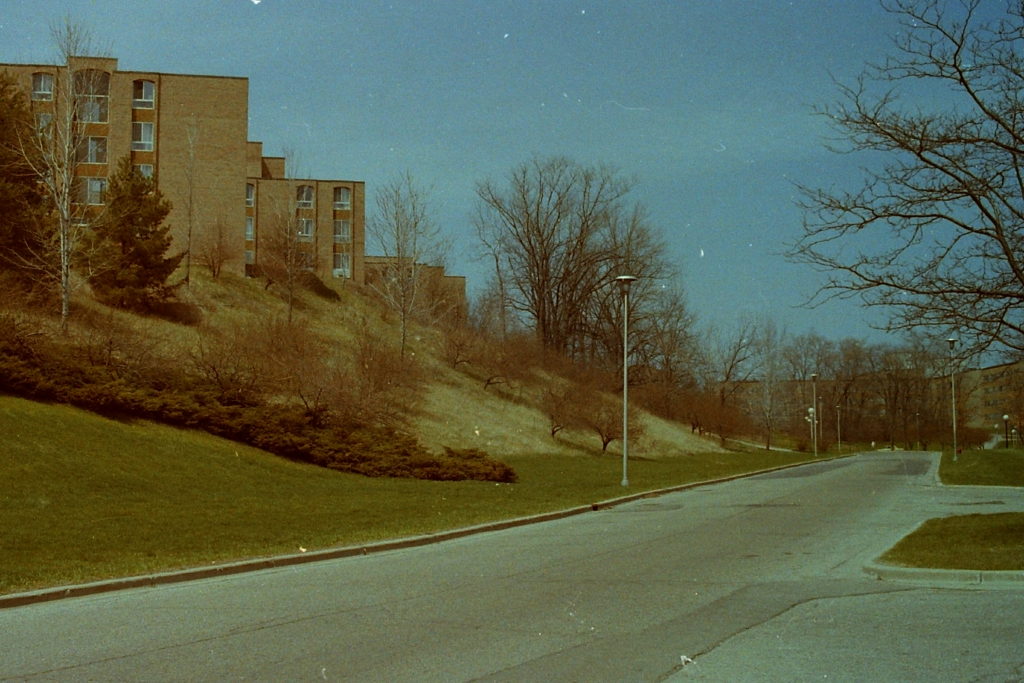
In the previous post I described how Baits Housing plays a defining role in students’ life on North Campus, which is anchored by College of Engineering, the Department of Architecture and Urban Planning and — last but not the least — the School of Music. Officially known as Earl V. Moore School of Music, Theatre and Dance, the prestigious department has produced such famous alumni as Arthur Miller, James Earl Jones, Lucy Liu and Madonna. The school is nestled among groves of pines and maples at the foot of Baits hills. In the rear of the building is a small lake bordering several grassy fields. The shape of the lake/water fountain was designed to resemble a grand piano, with the building’s narrow windows serving as its keys. Hence, the affectionate nickname Piano Pond.
Readers will find an aerial view of the school and its vicinity here. If you look close enough, you’ll find hidden in the heavy foliage a sloping footpath linking Baits to Earl Moore below — a secluded place for lovers whose bunkmates wouldn’t take the hint and leave the room.


